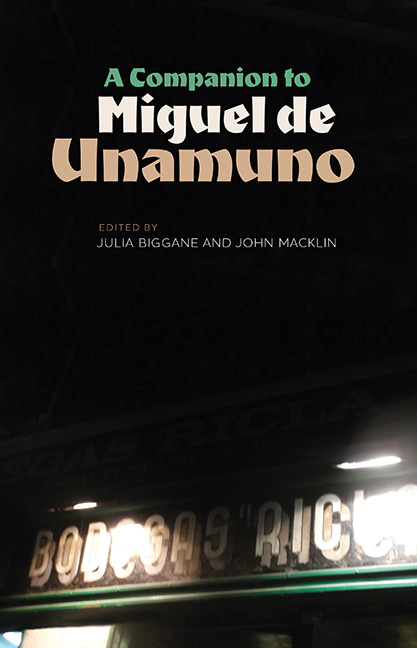9 - From Separate Spheres to Unilateral Androgyny: Gender and Sexuality in the Work of Unamuno
Published online by Cambridge University Press: 21 May 2021
Summary
Given that his writing career spanned more than forty years, it should not come as a surprise that the representation of gender and sexuality in Unamuno's work changed as the horizons of women and men in Spain, and their social and personal relations, shifted dramatically over the course of the late nineteenth and early twentieth century. Born into an era in which educational opportunities, civil-society rights and legal protections were starkly differentiated according to gender, and in which the Catholic Church dominated the (limited) discourse on sexuality and marriage, Unamuno lived to see the entry of women into higher education, the rise of secular birth-control organisations, the incorporation of middle-class women into the workplace on an unprecedented scale, the introduction of female suffrage and the legalisation of civil divorce.
Unamuno's fiction, drama, poetry and essays certainly register such changes, if idiosyncratically and at times obliquely. But he did not just chronicle such change, directly or indirectly; as a legislator in the first months of the Second Republic he enabled it too, voting to grant women suffrage at the end of 1931. But we should not conclude from this last fact that Unamuno was a supporter of feminism; as this chapter will argue, though Unamuno's representation of women altered notably over the course of his career, it remained deeply conservative. Nevertheless, this conservatism is far from uncreative or monotonous; indeed, much of his work may be read as a series of sometimes ingenious attempts to symbolically contain or resolve the transformations wrought by the departure of bourgeois women from the domestic sphere in ever greater numbers. His representation of male figures is no less interesting: as Jo Labanyi has pointed out, his work may be read as a ‘very self-aware exploration of masculine anxiety’ (2010: 96).
This chapter argues that representation of male and female figures may each be divided into three approximate, not entirely consistent periods. It will map the characteristics of gender representations and relations in his work to wider social change in Spain. The chapter will also explore the way in which questions of gender and sexuality in Unamuno's work have only relatively recently become areas of interest for scholars of early twentieth-century Spanish culture: they remain under-studied and the object of contradictory assessments.
- Type
- Chapter
- Information
- A Companion to Miguel de Unamuno , pp. 175 - 196Publisher: Boydell & BrewerPrint publication year: 2016
- 2
- Cited by

